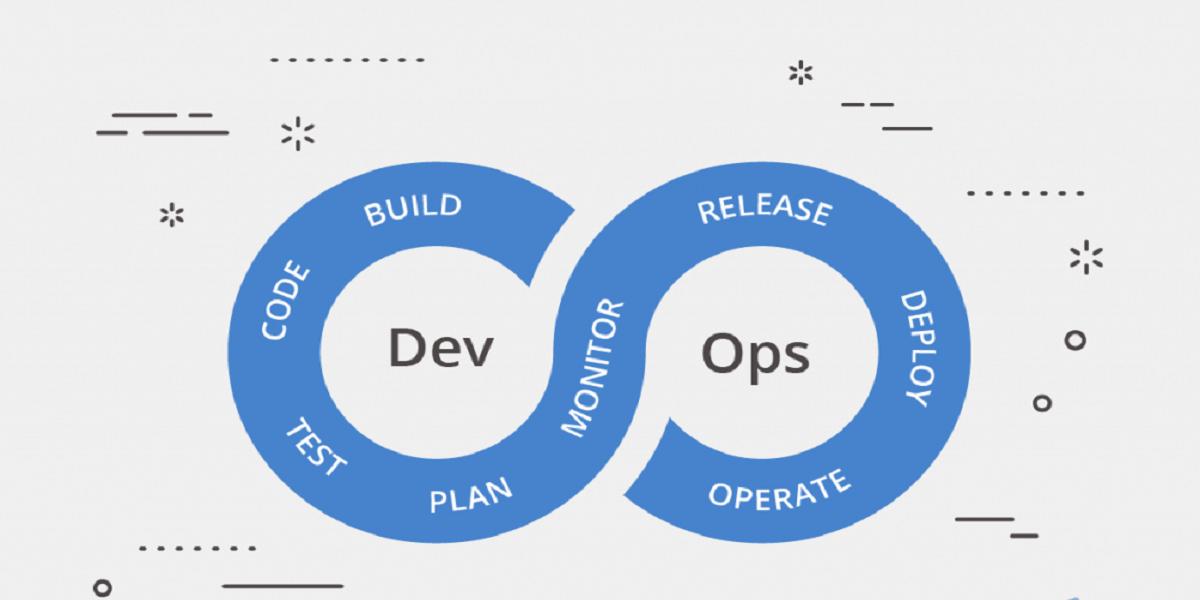
7 Steps To Implement Devops Strategy
- By Meravath Raju
- 28-09-2022
- DevOps
Over the past few years, the digital sector has experienced expansive and substantial advancements in storage, cell phones, networks, and the cloud. Today, almost everyone has seamless and easy access to software-driven innovation on demand.
Introduction:
Custom software development's market size was projected at $388.98 billion in 2020 and is estimated to reach almost $650.13 billion in the next three years. Since improving and enhancing the software development process and techniques is easier! Businesses must figure out how to speed up and automate the write-test-deploy cycle without having to incur or cause any substantial damage. In this scenario, the DevOps approach enters the picture.
What is DevOps?
DevOps refers to a collective approach and effort between an organization's operations and development teams. The days of rigorously writing code and waiting for an excruciating amount of time to deploy it are officially over. However, applying DevOps without a concrete plan in place might lead to a jumble and haphazard execution of tasks. Therefore, it is crucial to discover how to develop a clear DevOps strategy in your company and speed up your software delivery pipelines to prevent this.
A step-by-step guide for implementation of DevOps
As in common knowledge, the development and operations departments have various strategies, goals, motivations, and objectives. DevOps came into being to solve these problems efficiently, but the competing responsibilities and strategies resulted in the "dev vs. ops, blame game." A clear DevOps roadmap and technique help firms eliminate the obstacles that delay innovation by combining the best of the IT worlds.
One should work toward achieving a total of five goals while developing a DevOps strategy: cooperation, frequent and quick delivery, scalability, dependability, and security. It is a given fact that you'd hear a lot of talk about how DevOps and Agile work simultaneously. The link between DevOps as well as agile is quite compatible because of the fact they have an iterative nature. DevOps should be considered as a completely different project, nevertheless.
For Candidates who want to advance their career, DevOps training is the best option
Here are the essential stages to creating a successful DevOps implementation plan for your company:
1. Analyze your current situation
Implementing DevOps in the real world might be challenging as it's never easy to swap out old practices for new ones. Therefore, you must first carefully and meticulously assess the pre-DevOps state of your company and comprehend the solution according to the patterns of the apps you intend to develop.
An extreme database corruption, for example, prevented Netflix from shipping DVDs to its subscribers for three days straight in 2008. They were quite aware of the need to switch from horizontally scalable, highly trustable distributed systems in the entire cloud system to vertically-scalable single points of failure as an outcome of this circumstance. Consequently, after working on it for seven years straight, Netflix had to finish transferring its historical data to AWS in 2016.
2. Strive to develop a DevOps culture
DevOps is a culture shift about enhancing cooperation, communication, and transparency between an organization's development and operation teams. If not this, there may be quite substantial and significantly greater upheaval. The same is confirmed by Gartner, which has projected that 75% of DevOps programs would fall short of objectives due to problems and ambiguities with organizational learning and transformational strategies.
The internet store Etsy is a good example which gives us a good instance to help us learn an important lesson. Before the implementation of DevOps, Etsy was expanding at a steady pace while employing the conventional waterfall methodology.
With the aid of DevOps, they got the ability to assemble a harmonious team that everyone wished to have on their side if the website went down.
3. Give a proper definition of your DevOps process
You can enhance infrastructure provisioning, continuous development, and testing with the help of a DevOps approach from scratch.
The process brings you a step closer to the communication and alignment gaps and lacuna across previously compartmentalized teams as follows:
CI/CD or continuous integration and delivery
A key DevOps approach is a continuous integration process in which developers have to add their updated code to the main repository regularly. And in any case, the continuous integration leaves off, and continuous delivery is vested with the responsibility to pick up. It is responsible for the automation of the distribution of programs to specified infrastructure settings that consist of development and testing. Organizations can adapt to changing customer requirements and needs and guarantee application upgrades' quality and longevity thanks to CI/CD automation.
Continuous testing
Continuous software testing is a prerequisite for CI/CD to provide and implement high-quality apps for users. As an obvious result, the speedy response also raises the caliber of the software program.
We have this notion that Netflix, the company that serves as the DevOps poster child, did not have that much of an issue and spontaneously established a DevOps culture. In 2011, Netflix created the "Chaos Monkey" tool to evaluate its IT infrastructure's resiliency. To test how the surviving systems react to the outage, it deliberately turns off machines when it comes to Netflix's production network.
Continuous deployment
Suppose we were to see the pipeline's last stage. In that case, it is continuous deployment, and it involves using tools or scripts for an automatic start and distribution of the software artifact to end users.
Amazon has a solid reputation and is also a poster child for having excellent DevOps. When it was on its way to the transformation from physical servers to the AWS cloud, it switched to DevOps in 2010. A continuous deployment method run and operated by an internal system named Apollo was also an innovative implementation carried out by Amazon. It gives programmers the absolute freedom to deploy the code anytime they like to any servers they choose. By 2011, Amazon was updating its production servers with new and upcoming software on average every 11.6 seconds.
4. Make a wise selection of your DevOps toolchain
You may create unique workflows, make a robust foundation, and carry out the implementation and access restrictions for seamless functionality by choosing the appropriate tools in combination with new and upcoming procedures. Thus, if you wish to achieve seamless integration, you must choose the tools by your IT environment, your needs, your tech stack, and also your preferred cloud provider.
The use of DevOps is a favourable option for eCommerce sites and businesses. For example, Shopify, one of the leading online shopping apps, was the first significant eCommerce site to use DevOps technologies. It makes use of Kubernetes, which has been responsible for enabling Shopify to dramatically lower infrastructure costs while accelerating page response times.
5. Make sure there is proper security and compliance
DevOps security is the science and art of utilizing technology, rules and regulations, procedures, and tactics to safeguard and protect the whole DevOps ecosystem. Security must be integrated into various phases of the DevOps lifecycle, including conception, testing, release, design, development, and maintenance. Develop is the name given these days while referring to this form of DevOps security.
DevOps allows for the quick pushing, enhancement, and updating of large amounts of code. Always by security teams. Additionally, the DevOps output might also have to consider the operational flaws if security factors like code analysis, configuration checks, and vulnerability scans are not appropriately automated and carried out efficiently.
6. Identify appropriate DevOps metrics
Application performance, implementation speed, and quality assurance should be core focuses of DevOps deployment in any organization. Teams must determine, gather, examine, and evaluate metrics aligned with the most pertinent and streamlined business goals and KPIs for continuous improvement. You will receive the most sought-after and crucial information from these metrics that you need to have a basic knowledge of and be in charge of your software development process.
7. Make sure that you make a cross-functional product team
While analyzing the product's lifespan, a DevOps team must also maximize product delivery and value. If you wish to accomplish this task, your team should be made up of individuals with expertise and experience in both operations and software engineering. But in practical terms, some team members excel at developing code, while others understand running and maintaining infrastructure.
Therefore, if we see DevOps teams in large enterprises, they often consist of six primary functions. These positions include QA engineers for manual and automated testing, security engineers, software developers, release managers, and evangelists for DevOps.
Conclusion
Assessing the existing condition of your organization and setting attainable goals should be your priority if you start your journey of applying the DevOps methodology. Transformations to DevOps, of course, could not possibly take place overnight. Your company has to adopt a more organized and streamlined strategy for success. Everyone on board will require extensive education, training, time, and means to adjust to all kinds of changes. To guarantee that you reap the full benefits of DevOps, you must partner with a team of professionals. If you work together, it will be easy to grow your company to the heights you've always wanted it to!
Recent blog
.jpg)
Why Specialized Ecommerce SEO Companies Scale Growth Faster?
SEO | 12-09-2025.jpg)
AI vs. Human Intelligence: Can Machines Really Think?
Artificial Intelligence | 12-09-2025




